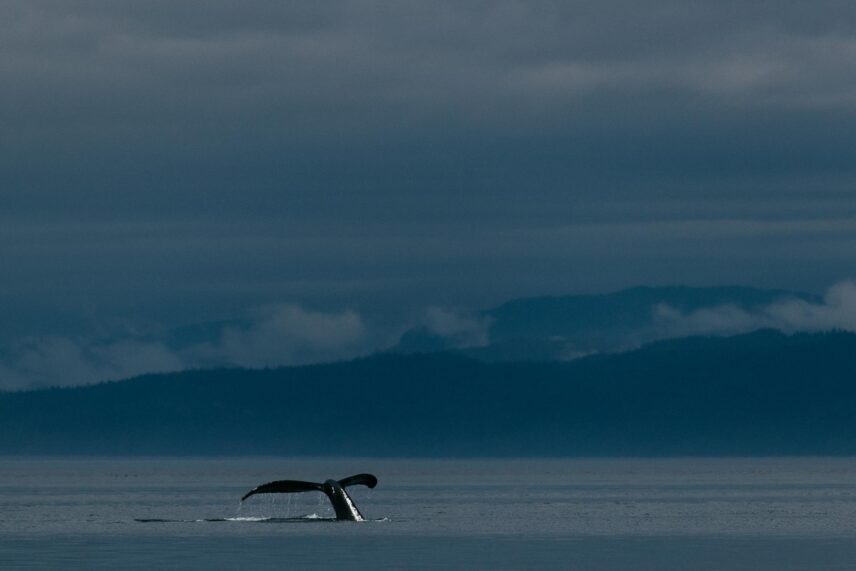Whales of the West Coast
Whales are truly stunning creatures. Whether you’ve had an opportunity to see one in person or simply in a video, their beauty and power shines through. It’s a magical moment to watch an orca breach the surface of the water as their dynamic and iconic colouring pokes through the waves.
Here on the coast of British Columbia, and more specifically in the Broughton Archipelago where Nimmo Bay is located, we are lucky enough to have a variety of whales that travel in our waters. The most common whales you’ll find while on the coast are humpback, minke, grey, and fin whales. It may come as a surprise that orcas, also known as killer whales, didn’t make the list. While they are a common species here, they’re classified as dolphins!
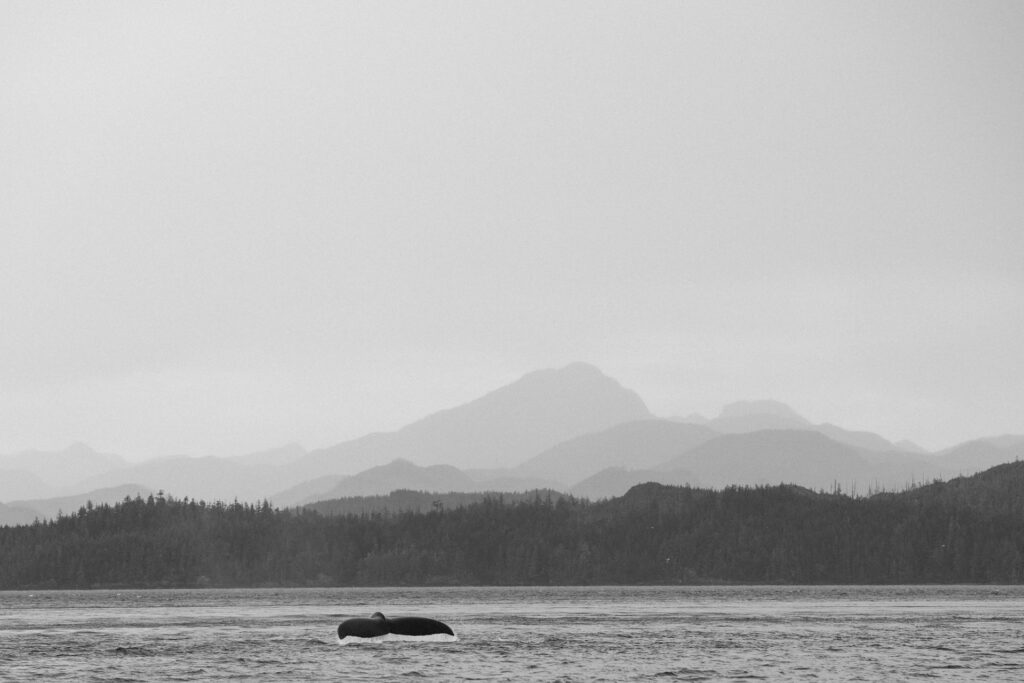
HUmpback Whales
First we have the 16 meter long (school bus sized!) acrobatic and showy humpback whales. They love breaching in the waves and slapping their fins on the water’s surface. Our guides can identify individual Humpback whales by their distinctive flukes, or tails, and the prominent bumps on their heads. Each humpback whale local to our region has a name and our guests love to see if they can figure out exactly who they are viewing. The cold summer coastal waters are their favourite feeding grounds! They’re rich with krill and small fish, a true whale-friendly feast.
Minke Whales
Another solitary species found in BC is the minke whale. They are smaller than humpback whales at about 10 metres long, and are distinguished by the bright white stripes on their pectoral (side) fins. These whales are rather elusive and don’t often breach the surface of the water. They are known as the whale ‘race cars’, often reaching speeds that keep up with moving vessels at 18-24 knots. Between their high speeds and propensity for long, deep dives, minke whales are rare and wonderful to spot and hard for scientists to study.
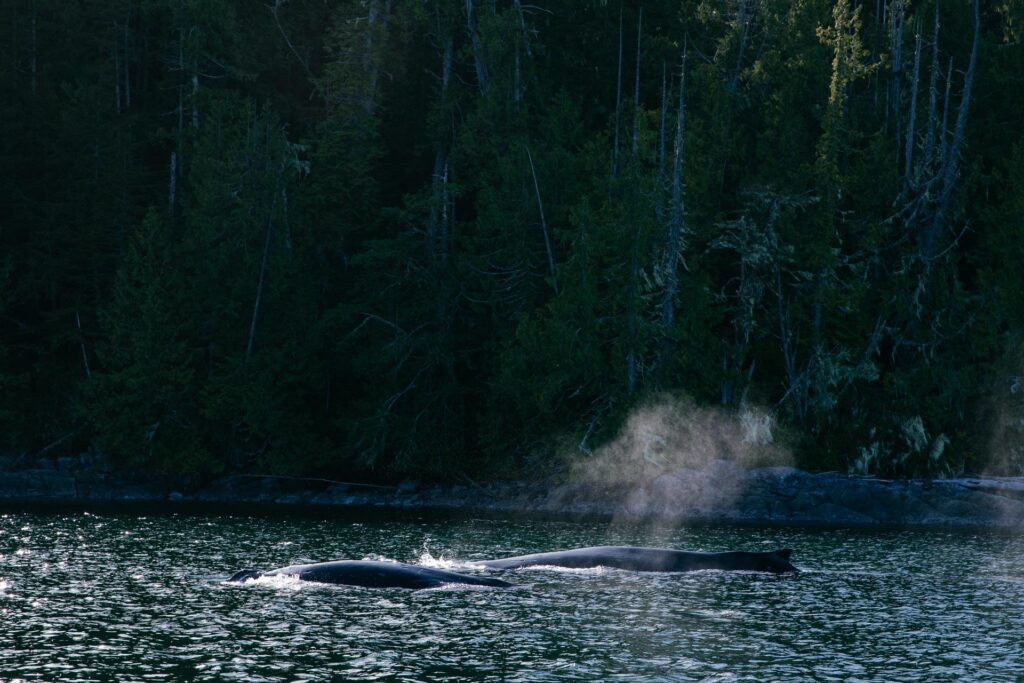
ORCAS
Then there’s the distinctive black and white orca, aka the dolphin imposter. They are highly social creatures and can be found in pods of up to 80 individuals. Here on the west coast, there are three different types of orca and each one has their own diet, range, and social system and they do not interbreed. The three groups are Bigg’s orcas, resident orcas, and offshore orcas. The fan favourite at Nimmo Bay are the resident orcas who follow the salmon runs. They tend to be the most active in pods during the summer months.
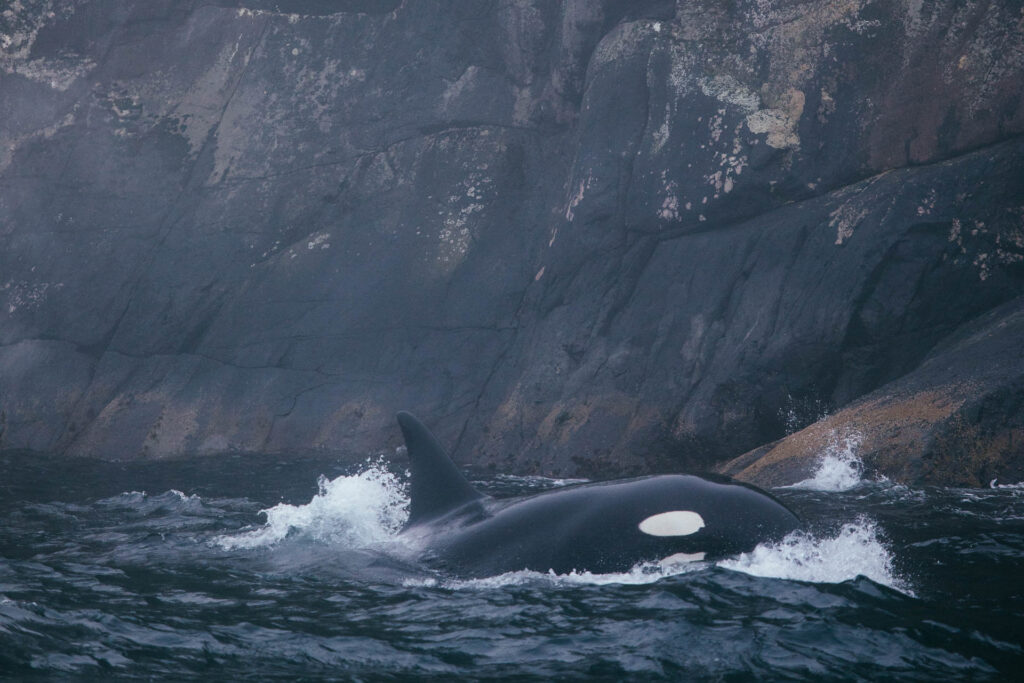
Grey Whales
Grey whales are mostly solitary creatures and pass through British Columbia waters in the spring, as they migrate from Mexico to Alaska. As per their name, they have grey and mottled colouring and are usually covered in barnacles. This earned them the nickname, ‘breathing rocks’. They also differ from other whales on our list because they don’t have a dorsal fin, the fin located on the backs of many whale species.
Fin Whales
Finally, fin whales are the largest of the group, at almost 22 metres in length (about the size of a tennis court). Because of their size, they are often confused with blue whales. Unlike some of the other whales who visit BC waters seasonally, fin whales are found on the west coast in both summer and winter. Shockingly, they can launch their massive bodies completely out of the water when they breach.
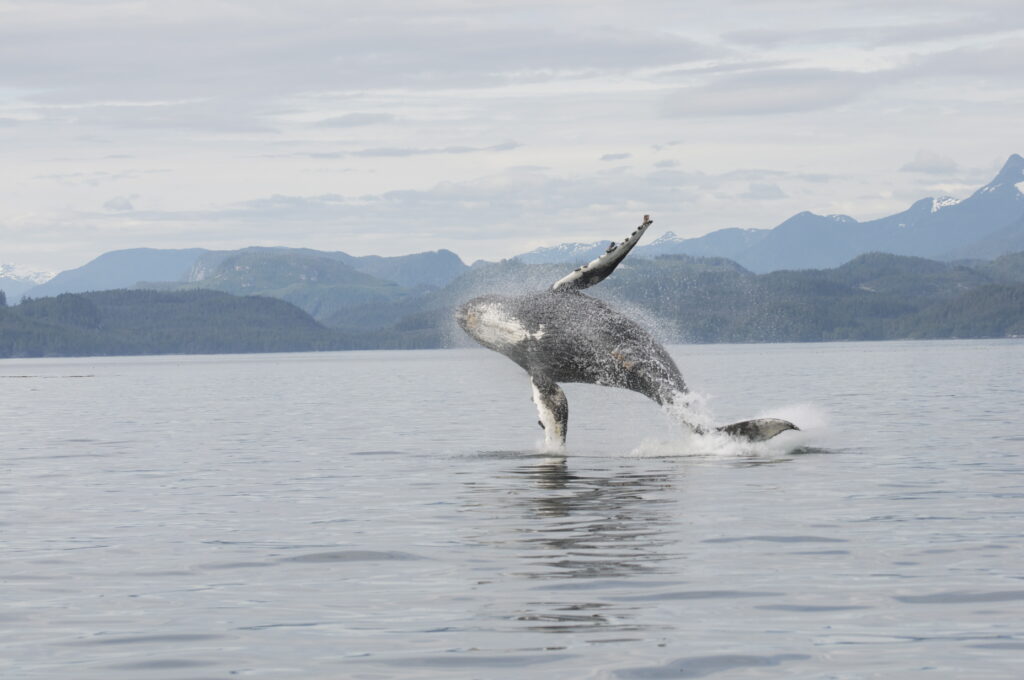
A Safe haven
It’s important to note that British Columbia waters are critical habitat for many of these species. Some of which are listed as threatened, like the killer whale. Places such as Telegraph Cove, Johnstone Strait, and the Broughton Archipelago, where Nimmo Bay is situated, are hot spots for congregating whales. So what is it about these waters that makes them such incredible habitat for whales? First, it’s about socialization and breeding. Whales are highly social animals; they live in tight-knit family groups called pods. Occasionally, especially with orcas, multiple pods will gather together to socialize and even have ‘dance’ parties.

Secondly, these areas are abundant with food for local whale species. The swirling ocean brings massive cold swells of water up toward the surface. This brings large amounts of nutrients and small creatures up from the depths for the whales to munch on. It’s perfect for a feeding frenzy!
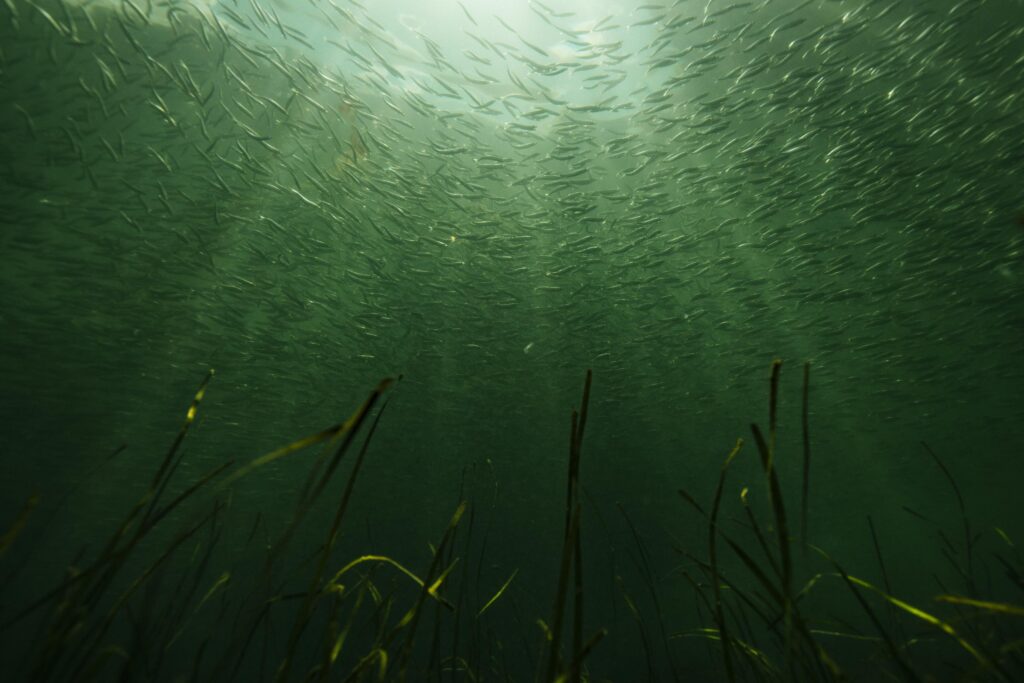
A THoughtful Approach
Nimmo Bay is privileged to be located in this region of vast biodiversity, a perfect haven for whales. It’s a thrilling moment when a guide can point out a whale to someone for the first time while out on a Coastal Safari. However, we acknowledge how sensitive whales are to disturbance. It is our policy to present a thoughtful approach to whale watching as an activity at Nimmo Bay. Our guides strictly follow and exceed all regulations laid out by the government and actively monitor the wellbeing of these great mammals.
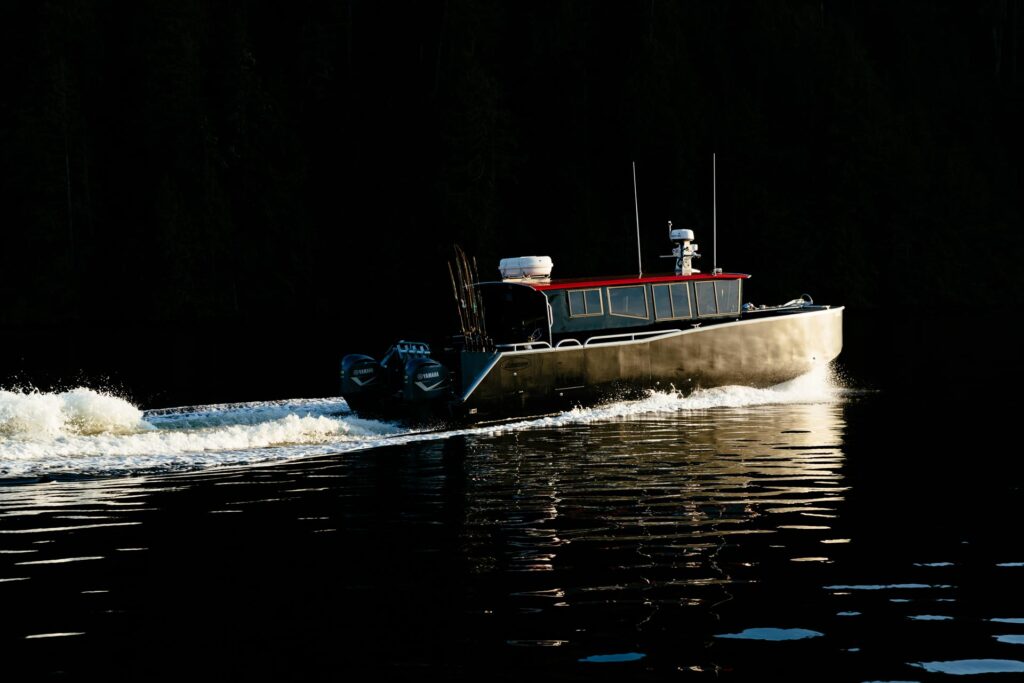
It’s important to realize the impacts that boats can have on the whale pods that call these waters home. Whales are incredibly vocal, and rely on sound for navigating, feeding, and socialization. Boats with diesel engines make a lot of noise when they travel across the water’s surface, and water magnifies sound. This can make it challenging for whales to communicate with one another, to hunt, and can cause them extra stress. Once they’re spotted, it’s essential to stay a safe distance away from whales and cut any engine noise by turning engines off.
The physical presence of boats near whales can also cause challenges. Whales will use extra energy to try and maneuver away from boats when feeding or trying to rest. There’s also the scary possibility of collisions between boats and whales. Many of the whales in coastal British Columbia waters, like humpbacks and fin, tend to sleep on the surface, swim unpredictably, or very suddenly rise to the surface after a long dive. So it’s incredibly important to be whale wise and respect their boundaries.
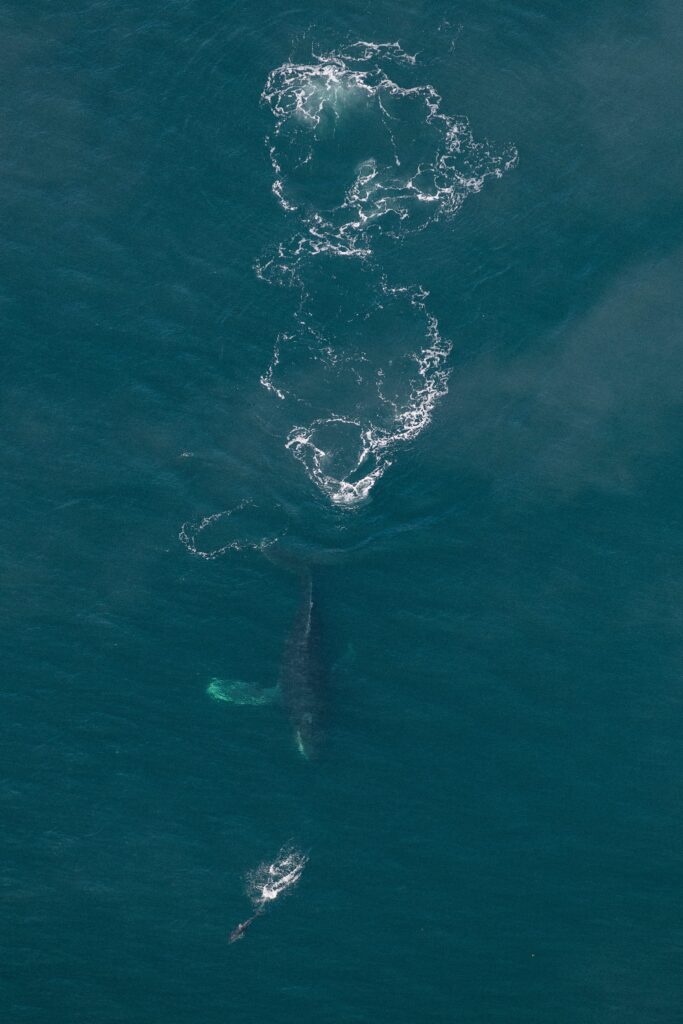
Whales are wild creatures, and it’s imperative that they stay wild. The west coast waters are essential habitat for these beautiful creatures and it’s our ethos that their populations be allowed to flourish and grow in the Broughton Archipelago with minimal disturbance.
Fun Fact!
The behaviour you see below is spyhopping! It’s when whales use their powerful fins to position themselves vertically in the water and poke their heads straight up above the surface. This lets them take a look around at their surroundings. This orca might be scoping out prey!
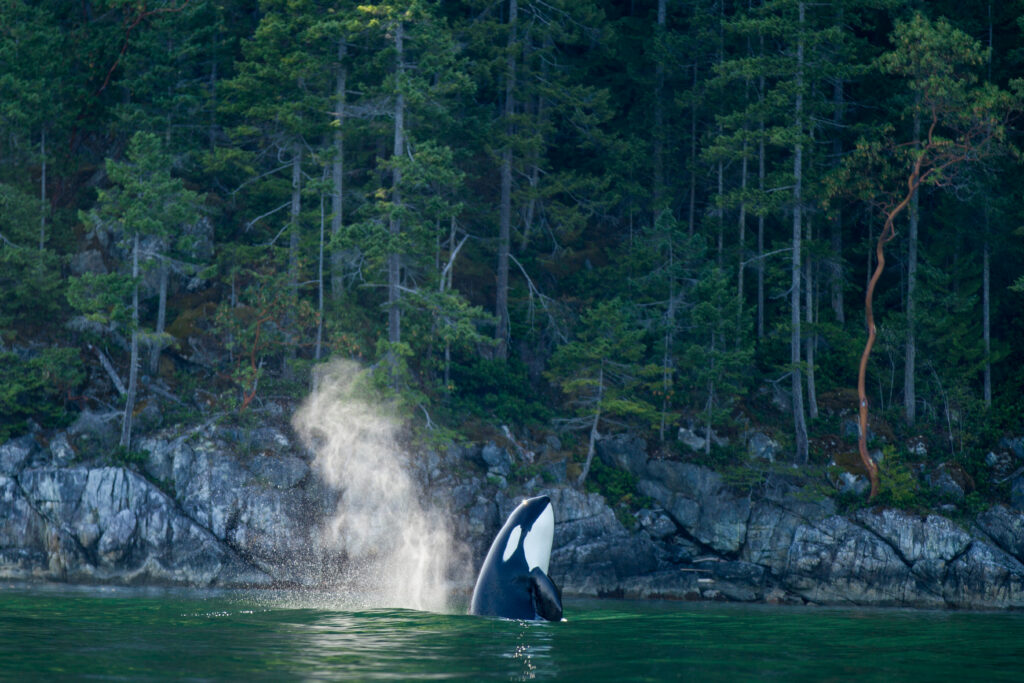
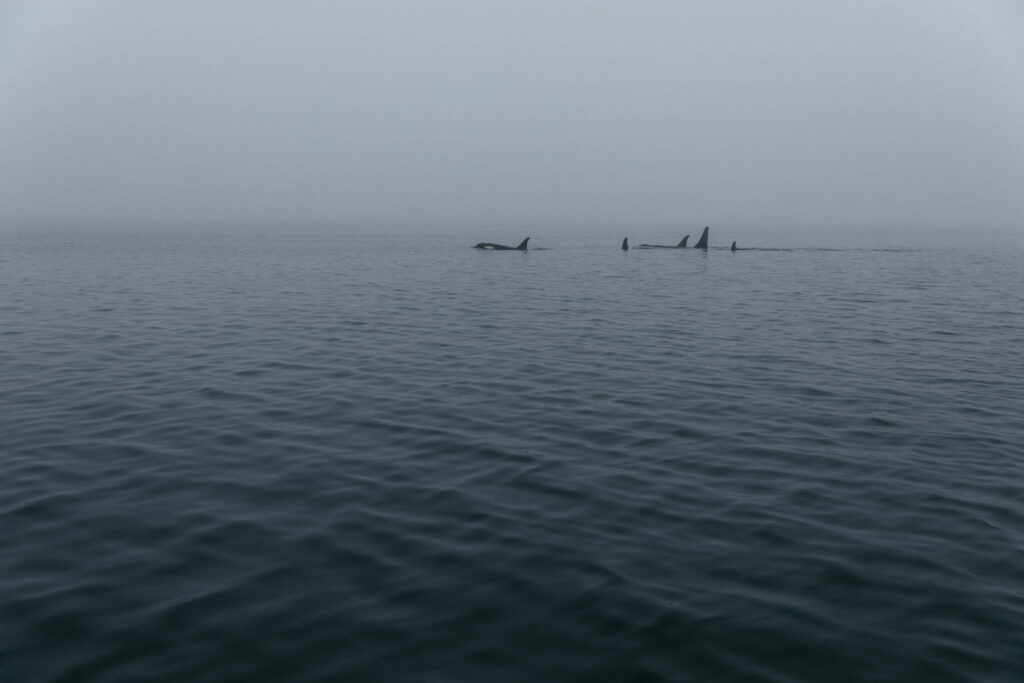
All photos by Jeremy Koreski
